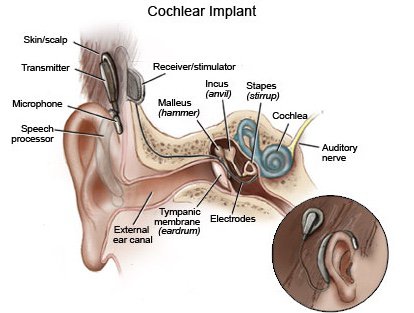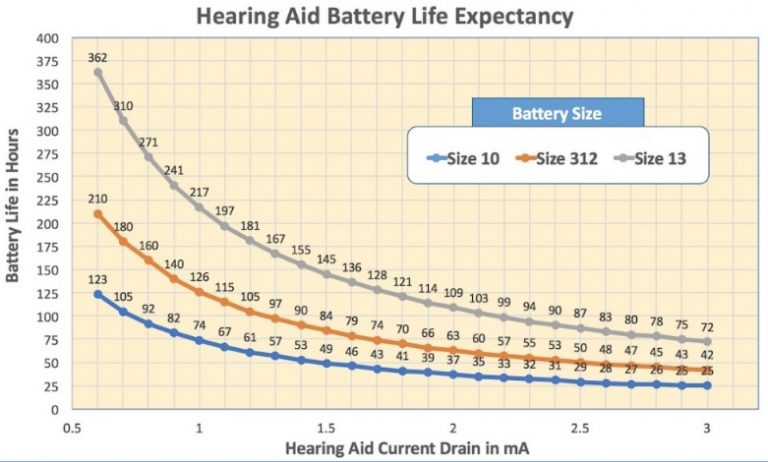Cochlear Implant
In Australia, hearing loss is growing. While 1 in 6 Aussies currently live with some sort of hearing loss, the numbers are increasing. In fact, it’s expected to grow to 1 in 4 by the year 2050 according to some recent studies. While many choose hearing aids to manage their hearing loss, using a cochlear implant is also an alternative.
History of The Cochlear Implant
A cochlear implant is a device which uses electrodes and the cochlea (in the ear) to stimulate auditory nerves, which then produces sounds. While the technology behind implants were created in the 1800s, implants have only been on the market since the 1980s. Australian doctor Graeme Clark began working on developing an implant. In 1967, after reading about a patient who was able to hear again with electrical stimulation, Clark went to work. While the journey was tough with little funds and disbelieving colleagues, Clark had a breakthrough in 1978 when he operated on Rod Saunders. Post-surgery, Saunders was able to hear sound again. It was a huge step towards the commercial development of implants. Now, the industry uses multichannel implants and the connection between implants and spoken word recognition has grown over the last few decades.

Who Uses The Implants?
The definitions of who can be a cochlear implant candidate have changed over time. In the beginning only adults with profound deafness were considered. But the degree of hearing loss is no longer a requirement. And children at 12 months of age can also have the implant. Children who receive implants are recommended to attend specialised programs to learn how to use the implant and how to process sounds. With that said, people who decide on implants often do so because they are partially or fully deaf; hearing aids offer little to no help. And although implants help to process sounds they can’t insinuate “normal” hearing. A cochlear implant can open up a new view of the world but they require more training and care than hearing aids.
The Design and Purpose
Normally, sound reaches the tympanic membrane in our ear canal. In the canal, the sound causes vibrations and these vibrations cause three small bones in the middle of the ear to move. This leads to movements in the membrane and pressure in cochlear fluids 3. But for someone with hearing loss, the ear will have damaged portions so sound can’t travel or reach the brain as it would typically. A cochlear implant bypasses damage in the ear and, with the help of electrodes, stimulates auditory nerves and produces sound.

How Cochlear Implants Work
Sound is picked up by the receiver on the outside by the ear. The sound goes to the speech processor, then converts to electrical signals after being analysed. As electrical signals, it’s sent to the inner ear, then finally, it’s sent to the brain. Implants require surgery. One part of the implant is inserted around the temporal bone by the ear. It’s the “receiver-stimulator”. This part translates sound and sends an electrical signal to the brain. The second part is outside. It uses a microphone/receiver, antenna, and speech processor. Here sound is received and converted into the electrical signal and the implant sends it to the brain.
The Insertion Process
A cochlear implant requires surgery for insertion. Anaesthesia will be provided to prevent pain and also to put you to sleep. While you are under, the surgeon will make a small incision behind the ear. Then the bone behind the ear will be opened to insert the implant using a drill and microscope. After that the electrode will be put in the inner ear (cochlea). Finally, the receiver is put behind the ear in a pocket, as the pocket keeps the receiver from moving. It’s also to help the electrical information be received and sent easily 4. Post-surgery stitches will be behind the ear. Most likely, you’ll feel a bump behind your ear where insertion happened. But the outside of the device won’t be attached until roughly 1-4 weeks after the initial surgery.
Cochlear Implants vs. Hearing Aids
The general price of a cochlear implant within Australia begins at $25,000. This is a steep price, but Australia’s public medical support for these implants can help. There are often price deductions or in some cases, like with private health insurances, the full price of the implant and surgery can be covered. The life expectancy of an implant depends on maintenance and proper care. With adequate care, the cochlear may last for many years after warranty. But the microphone (lasting 1-2 years), headpieces (lasting 1-2 years), and batteries (purchased as necessary) have a shorter life expectancy and should be changed when needed. As an alternative even though it’s pricier than non-rechargeable batteries, rechargeable batteries last a long time, roughly 1 year.
Hearing aids come in multiple different sizes and shapes. They don’t require surgery for use like implants do although some devices like the Lyric require insertion by a specially trained audiologist. They can be fitted for behind the ear, completely in the canal, receiver behind the ear or in the canal, and more. Prices depend on key features and programs but can typically be bought for as low as $1,700 or as high as $6,000+. Hearing aids require batteries that usually last a few days to one week. Turning the hearing aid off at night as well can save battery life.

How Hearing Choices Can Help
Hearing Choices has a wide range of audiologists and staff on hand. Their professionals have a goal and that is to make hearing care easier and more accessible to have now than ever before. With the web, expert knowledge about hearing loss, products, and treatments, Hearing Choices has a network of Australian audiologists to provide you with professional treatment done right. Your can book a hearing appointment with Hearing Choices’s team of highly trained professionals today!
